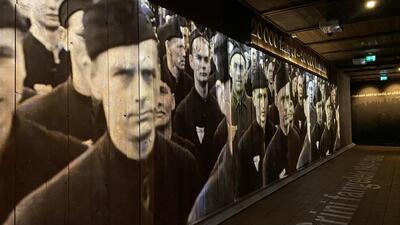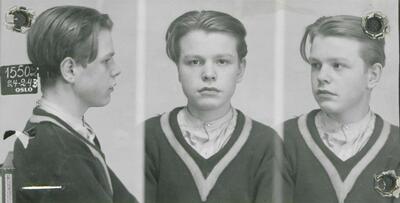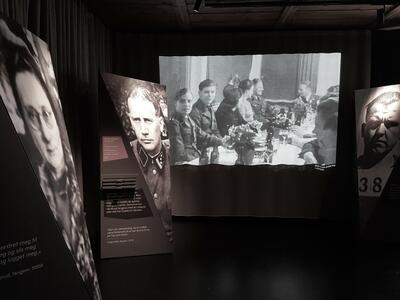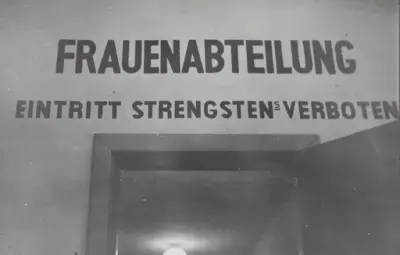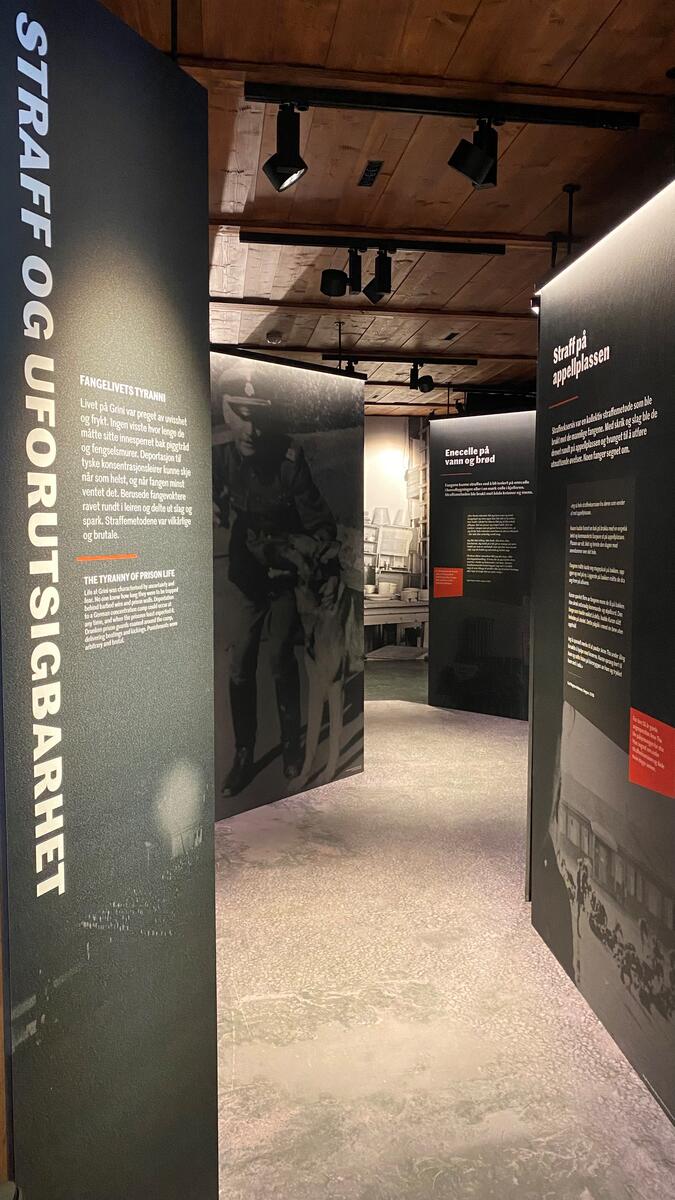
The Tyrrany of Prison Life
Life at Grini was characterized by fear and uncertainty. No one knew how long they would have to be trapped behind barbed wire and prison walls. Deportation to German concentration camps could happen at any time, and when the prisoners least expected it. Drunken prison guards would violently roam the camp. The methods of punishment were arbitrary and brutal.
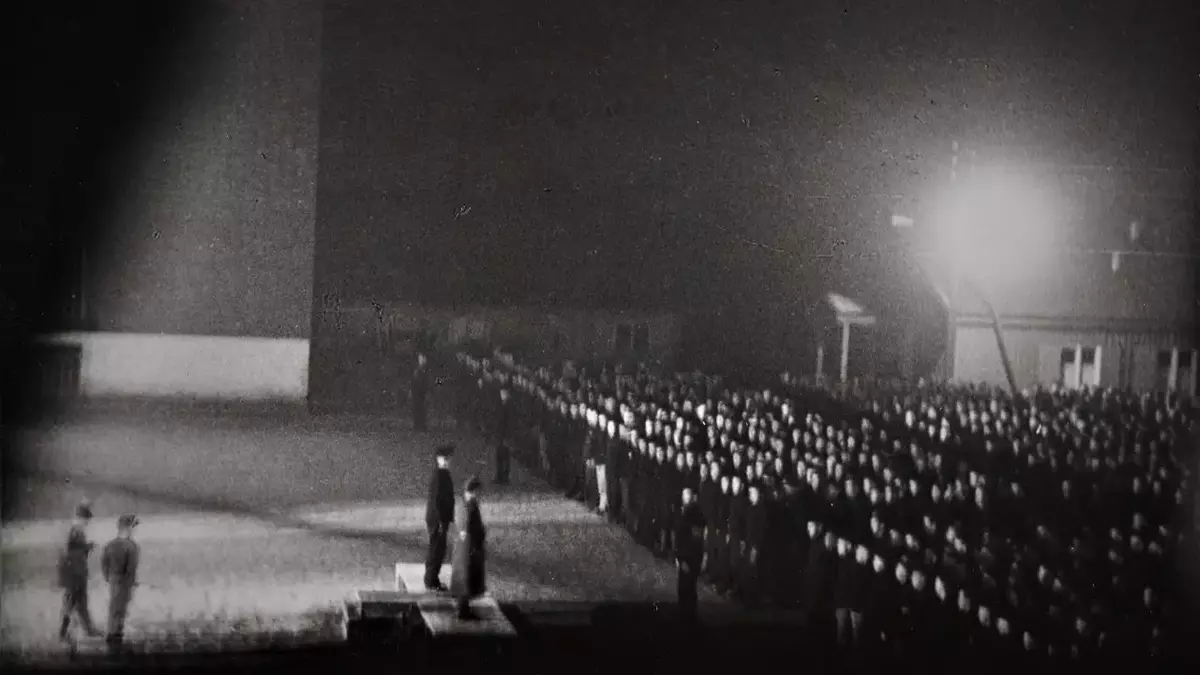
Through quotes, photographs and drawings the prisoners themselves tell the stories of how it happened, and how they experienced captivity.
With a smile, a handshake and a "see you later" they said goodbye.
The cars drove into the square, and the prisoners got out amidst shouting and commotion from the Germans. The journey into the unknown had begun.

Somewhat reguralily, prisoners were deported from Grini to German concentration camps. The roll calls for the prisoner transports were characterised by fear and anxiety. No one knew who would be next.
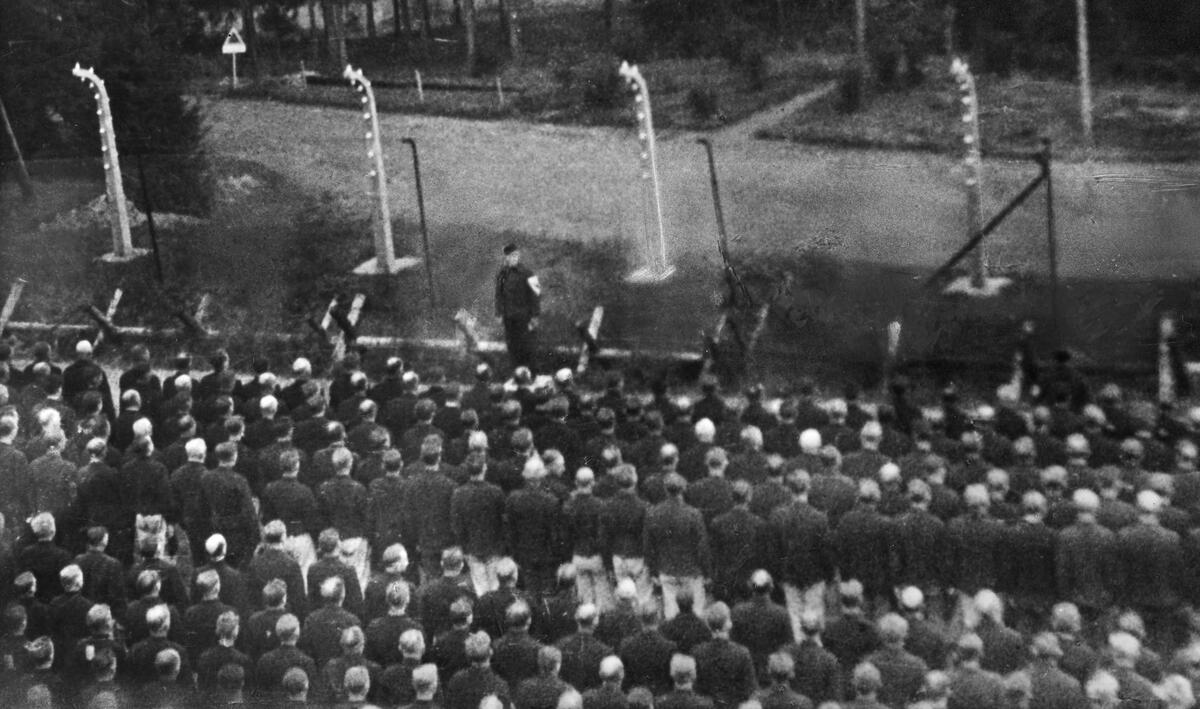
More than 3,400 Grini prisoners were deported to German concentration camps during the second world war. Some never returned home.

Punitive exercise was a collective punishment method used against the male prisoners. The prison guards were screaming at and hitting the prisoners while they were driven around the appelplatz and forced to perform exhausting exercises. Some prisoners lost consciousness from exhaustion
The appelplatz was wet and muddy that day, with puddles of water all over.
The prisoners had to throw themselves on their stomachs on the ground, get up again and get down again. Lying on the ground they had to pull themselves forward on their elbows.
